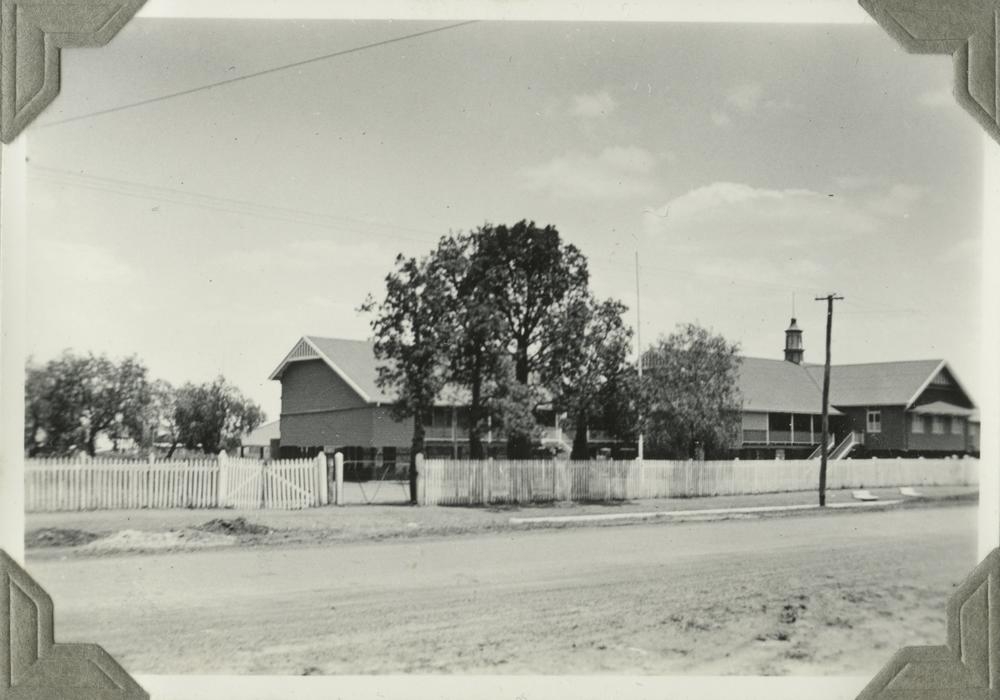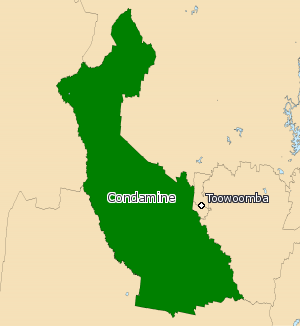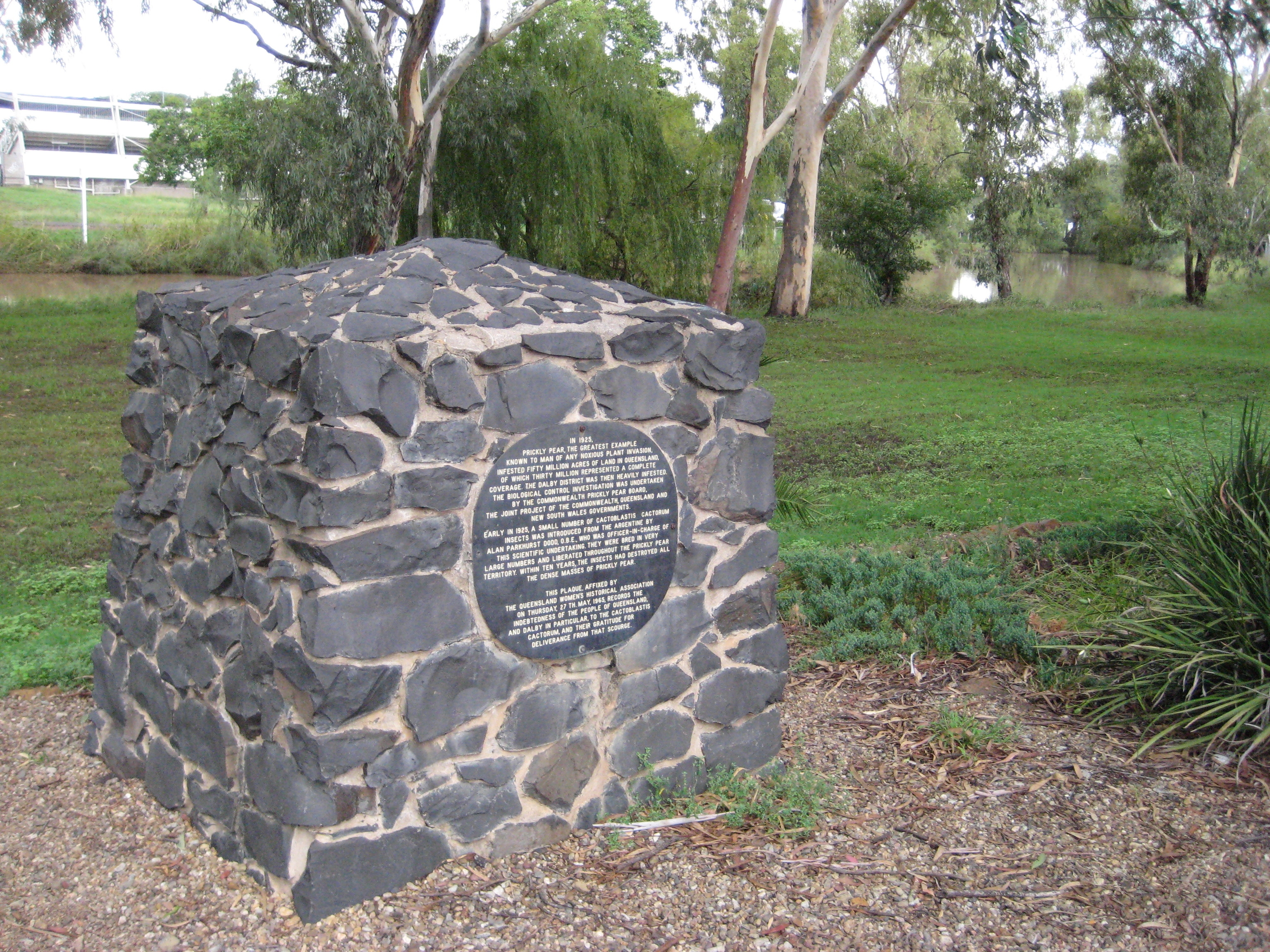|
Dalby State High School
Dalby State High School is a heritage-listed state high school at 28B Nicholson Street, Dalby, Western Downs Region, Queensland, Australia. It was built from 1953 to 1954. It was added to the Queensland Heritage Register on 19 August 2016. History Dalby State High School (SHS) opened on its present site in 1954, due to overcrowding at Dalby State School (est.1861) – which had accommodated a secondary department (or 'high top') since 1914. In 2016 Dalby SHS retains six 1950s buildings, and part of a seventh, which demonstrate the evolution of standard government designs: * the eastern half of Block A (Boulton & Paul prefabricated timber vocational buildings, 1953–1955) * the eastern section of Block B (Boulton & Paul prefabricated timber school building, 1953–1954) * Block D (highset timber school building with semi-enclosed stair, 1954–1955) * Block C (timber school building with timber floor trusses, 1956–1958) * Block F (administration building, 1958–1959 ... [...More Info...] [...Related Items...] OR: [Wikipedia] [Google] [Baidu] |
Dalby, Queensland
Dalby () is a rural town and locality in the Western Downs Region, Queensland, Australia. In the , the locality of Dalby had a population of 12,719 people. It is on the Darling Downs and is the administrative centre for the Western Downs Region. Geography Dalby is approximately 82.3 kilometres (51 mi) west of Toowoomba, west northwest of the state capital, Brisbane, 269 kilometres (167 mi) east southeast of Roma and 535 kilometres (332 mi) east southeast of Charleville at the junction of the Warrego, Moonie and Bunya Highways. State Route 82 also passes through Dalby. It enters from the north as Dalby–Jandowae Road and exits to the south as Dalby–Cecil Plains Road. Dalby-Cooyar Road exits to the east. Dalby is the centre of Australia's richest grain and cotton growing area. Western railway line The Western railway line passes through Dalby with a number of railway stations serving the locality: * Baining railway station () * Yarrala railway stat ... [...More Info...] [...Related Items...] OR: [Wikipedia] [Google] [Baidu] |
Domestic Science
Home economics, also called domestic science or family and consumer sciences, is a subject concerning human development, personal and family finances, consumer issues, housing and interior design, nutrition and food preparation, as well as textiles and apparel. Much less common today, it was and is most commonly taught in high school. Home economics courses are offered around the world and across multiple educational levels. Historically, the purpose of these courses was to professionalize housework, to provide intellectual fulfillment for women, and to emphasize the value of "women's work" in society and to prepare them for the traditional roles of sexes. Family and consumer sciences are taught as an elective or required course in secondary education, as a continuing education course in institutions, and at the primary level. Beginning as home economics in the United States, the course was a key part of the education system for teaching one the art of taking care of a househ ... [...More Info...] [...Related Items...] OR: [Wikipedia] [Google] [Baidu] |
Department Of Public Works (Queensland)
The Department of Communities, Housing and Digital Economy (CHDE), formerly the Department of Housing and Public Works, is a ministerial department within the Queensland Government, tasked with providing housing (including homelessness and building standards), sport, digital technology, and urban design and architecture services to Queensland individuals and businesses. HPW was also responsible for providing procurement, office space and digital services to Queensland Government departments (including 27 ongoing services through Queensland Shared Services). Executive leadership and structure Minister for Housing and Public Works HPW is overseen by its Minister, Hon Mick de Brenni, the member of the Queensland Legislative Assembly for electoral district of Springwood, Springwood. He represents the Australian Labor Party (Queensland Branch), Australian Labor Party. In addition, he is also the Minister for Digital Technology and Minister for Sport, and has held these three mi ... [...More Info...] [...Related Items...] OR: [Wikipedia] [Google] [Baidu] |
Electoral District Of Condamine
Condamine is an electoral district of the Legislative Assembly in the Australian state of Queensland. Condamine takes in areas to the north-west, west and south of Toowoomba. It includes a number of small towns, such as Oakey, Pittsworth, Cambooya and Clifton. The district is named for the Condamine River which runs through it. Created for the 2009 state election, it was mostly made up of territory previously belonging to the abolished districts of Cunningham and Darling Downs. It also drew a small number of voters previously belonging to the district of Toowoomba South. Originally proposed to be named Dalby by the Electoral Commission of Queensland, the name Condamine was adopted instead upon further review. There was also an earlier district known as Condamine that existed from 1950 to 1992. It was based in the same region. History The electorate's re-introduction at the 2009 state election pitted two sitting members against each other. MPs Ray Hopper and Stuart Copela ... [...More Info...] [...Related Items...] OR: [Wikipedia] [Google] [Baidu] |
Queensland Legislative Assembly
The Legislative Assembly of Queensland is the sole chamber of the unicameral Parliament of Queensland established under the Constitution of Queensland. Elections are held every four years and are done by full preferential voting. The Assembly has 93 members, who have used the letters MP after their names since 2000 (previously they were styled MLAs). There is approximately the same population in each electorate; however, that has not always been the case (in particular, a malapportionment system - not, strictly speaking, a gerrymander - dubbed the ''Bjelkemander'' was in effect during the 1970s and 1980s). The Assembly first sat in May 1860 and produced Australia's first Hansard in April 1864. Following the outcome of the 2015 election, successful amendments to the electoral act in early 2016 include: adding an additional four parliamentary seats from 89 to 93, changing from optional preferential voting to full-preferential voting, and moving from unfixed three-year terms t ... [...More Info...] [...Related Items...] OR: [Wikipedia] [Google] [Baidu] |
Les Diplock
Leslie Frank Louis "Les" Diplock CMG (16 September 1899 – 6 November 1983) was an Australian politician. Diplock was born in South Brisbane to house-painter Louis Diplock and Louisa May, ''née'' Lucas and attended state and private schools in Rockhampton. He was a student teacher from 1914 and taught in Rockhampton, Toowoomba and Bribie Island from 1918 to 1924. He married Olive Constance Becker on 20 December 1920 at Taroom. He was head teacher at six successive schools before acting as district inspector of schools for the south-west region from June to December 1952. He was elected to the seat of Condamine in the Legislative Assembly of Queensland in 1953 as a Labor Party candidate. Diplock was appointed minister for public instruction in 1956, and his ministry was chiefly remembered for a controversial bill providing for a government appointee to head an appointments and promotions repeal board at the University of Queensland; the bill was repealed when the Coalit ... [...More Info...] [...Related Items...] OR: [Wikipedia] [Google] [Baidu] |
Baby Boom
A baby boom is a period marked by a significant increase of birth rate. This demographic phenomenon is usually ascribed within certain geographical bounds of defined national and cultural populations. People born during these periods are often called baby boomers. The cause of baby booms involves various fertility factors. The best-known baby boom occurred in the mid-twentieth century, sometimes considered to have started after the end of the Second World War, sometimes from the late 1930s, and ending in the 1960s. Africa "According to the new UNICEF report, almost 2 billion babies will be born in Africa between 2015 and 2050 and the 2 main driving forces behind this surge in births and children are continued high fertility rates and rising numbers of women able to have children of their own." By 2050, Africa is predicted to account for about 55% of all births in the world, 40% of all children under the age of five, and 37% of all children worldwide (under 18). Africa will be ... [...More Info...] [...Related Items...] OR: [Wikipedia] [Google] [Baidu] |
Soldier Settlements In Queensland
Soldier settlement was the settlement of land throughout parts of Australia by returning discharged soldiers under soldier settlement schemes administered by state governments after World War I and World War II. The post-World War II settlements were co-ordinated by the Commonwealth Soldier Settlement Commission. World War I Such settlement plans initially began during World War I, with South Australia first enacting legislation in 1915. Similar schemes gained impetus across Australia in February 1916 when a conference of representatives from the Australian Government and all the state governments was held in Melbourne to consider a report prepared by the Federal Parliamentary War Committee regarding the settlement of returned soldiers on the land. The report focused specifically on a federal-state cooperative process of selling or leasing Crown land to soldiers who had been demobilization, demobilised following the end of their service in this first global conflict. The m ... [...More Info...] [...Related Items...] OR: [Wikipedia] [Google] [Baidu] |
Cactoblastis Cactorum
''Cactoblastis cactorum'', the cactus moth, South American cactus moth or nopal moth, is native to Argentina, Paraguay, Uruguay and southern Brazil. It is one of five species in the genus '' Cactoblastis'' that inhabit South America, where many parasitoids and pathogens control the expansion of the moths' population. This species has been introduced into many areas outside its natural range, including Australia, the Caribbean, and South Africa. In some locations, it has spread uncontrollably and was consequently classified an invasive species.Zimmermann, H., Bloem, S., Klei, H."Biology, History, Threat, Surveillance and Control of the Cactus Moth, ''Cactoblastis cactorum''" April 10, 2004. However, in other places such as Australia, it has gained favor for its role in the biological control of cacti from the genus '' Opuntia'', such as prickly pear. Interactions in native habitat In South America, ''Cactoblastis cactorum'' has many natural predators, including ants and New Worl ... [...More Info...] [...Related Items...] OR: [Wikipedia] [Google] [Baidu] |
Prickly Pears In Australia
Prickly pears (genus '' Opuntia'') include a number of plant species that were introduced and have become invasive in Australia. Prickly pears (mostly ''Opuntia stricta'') were imported into Australia in the First Fleet as hosts of cochineal insects, used in the dye industry. Many of these, especially the tiger pear, quickly became widespread invasive species, rendering of farming land unproductive. The moth '' Cactoblastis cactorum'' from Argentina, whose larvae eat prickly pear, was introduced in 1925 and almost wiped out the prickly pear. This case is often cited as an example of successful biological pest control. A monument to ''Cactoblastis cactorum'' was erected in Dalby, Queensland, commemorating the eradication of the prickly pear in the region. The Cactoblastis Memorial Hall in Boonarga, Queensland, also commemorates the eradication. Species These ''Opuntia'' species are recorded as naturalised in Australia: *''Opuntia aurantiaca'' *'' Opuntia dejecta'' *'' O ... [...More Info...] [...Related Items...] OR: [Wikipedia] [Google] [Baidu] |
Cactoblastis Monument, Dalby, Queensland, Australia
''Cactoblastis'' is a genus of snout moths. It was described by Émile Louis Ragonot in 1901 and is known from Argentina, Peru, and Brazil. Species * ''Cactoblastis bucyrus'' Dyar, 1922 * ''Cactoblastis cactorum'' (Berg, 1885) – South American cactus moth * ''Cactoblastis doddi'' Heinrich, 1939 * ''Cactoblastis mundelli'' Heinrich, 1939 * ''Cactoblastis ronnai ''Cactoblastis ronnai'' is a species of snout moth in the genus ''Cactoblastis''. It was described by Juan Brèthes in 1920 and is known from Brazil Brazil ( pt, Brasil; ), officially the Federative Republic of Brazil (Portuguese: ), is th ...'' ( Brèthes, 1920) References Phycitini Pyralidae genera Taxa named by Émile Louis Ragonot {{phycitini-stub ... [...More Info...] [...Related Items...] OR: [Wikipedia] [Google] [Baidu] |
Minister For Education (Queensland)
The Department of Education is a ministerial department of the Queensland Government responsible for the administration and quality of education in Queensland, Australia. The department is composed of two separate portfolios, Education Queensland and Early Childhood Education and Care (ECEC). The department also encompasses the Queensland Curriculum and Assessment Authority, a separate statutory authority responsible for creating syllabuses, curriculums, and assessment. History In 1875, the Department of Public Instruction was created, providing free, secular and compulsory education to all Queensland children. In 1957, the Department of Public Instruction was renamed to the Department of Education. Throughout 19901991, the Department of Education went through major restructuring following the release of the report, ''Focus on Schools''. In February 2004, the Department of Education and the Arts was created. In 200607, the Department of Education, Training and the Art ... [...More Info...] [...Related Items...] OR: [Wikipedia] [Google] [Baidu] |





